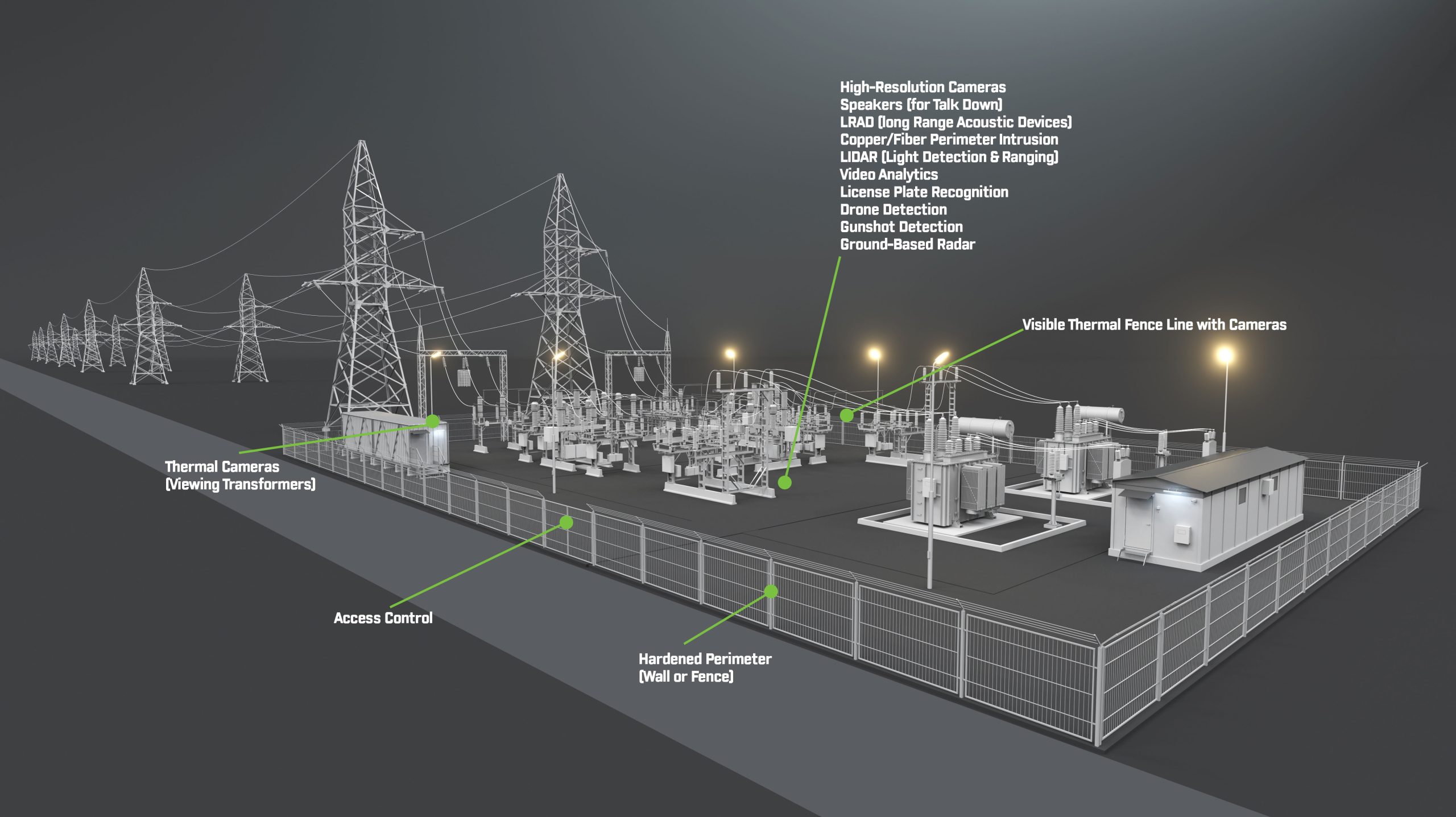
11 Key Questions to Ask Before You Plan Your Security Solution
Can we “Talk Tech”? Leaders are charged with growing profitability, mitigating risks, and improving productivity, but in the utility space reducing threats to infrastructure is also a key deliverable. Although many methods are available to ensure regulatory compliance, the Security Industry Association (SIA) states, “Perimeter security and access control were cited as key components of protecting utilities’ sites, with video surveillance and other technologies playing important supporting roles.” Securing the border, so to speak, is an area where technology can be an indispensable asset.
While hardening any perimeter is paramount, a “layered effect” should be considered in any robust design. Consider early detection options such as short-range radar with classification abilities, thermal and visible-spectrum cameras for tracking and verification, and triggers that initiate an audio speaker with a pre-recorded message: “Warning! You are entering a restricted area.”
With regards to the massive transformers within our nation’s most critical substations, the example below highlights various technologies available for a “layered security” design. While the below referenced components are not all required by regulation, selecting two or more can provide a robust combination of protective layers to any security solution.

The best practice in any design is to think through (a) what do we want to achieve, (b) how much risk is inherent in the operation, and (c) how much risk do we need to mitigate? When one integrates more than one risk-mitigating security component, the effect can be multiplicative. In other words, one plus one is far greater than two.
Below are key questions the team can step through to ensure they are prepared for the most cost-effective design to meet their security goals.
- What is the challenge? What problem are we trying to solve?
- What are the trends that are impacting security?
- What regulatory trends are emerging?
- How much can we afford to spend on security measures?
- What would be some security nightmares? What is the probability of each happening? What would be the cost?
- How can we reduce business interruption and enhance business resiliency/continuity?
- How can we minimize the loss of reputation, brand value, or goodwill?
- How would acquisitions/divestitures be handled?
- How can onboarding/offboarding of colleagues be expedited?
- How can insider threats be minimized?
- What are the criteria for selecting the right partners for any design solutions
About the Author:
Darin R. Dillon, CPP (Sr. Director Energy at LenelS2) is a leading security integration advisor to the energy, chemical, and critical infrastructure industries with a focus on optimizing performance, mitigating security risk, and improving organizational resiliency in the security ecosystem. Reach out if you’d like to further the conversation at darin.dillon@carrier.com